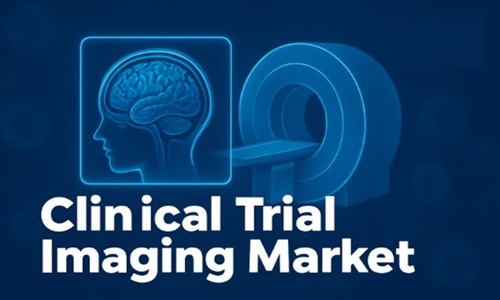The way we work is changing, and so is the way we host professional events. Corporate teams, startups, and even enterprise-level organizations are increasingly moving away from traditional conference halls and hotel ballrooms. Instead, they’re turning to coworking spaces — and for good reason.
Coworking spaces have evolved far beyond their early roots as flexible desks for freelancers. Today’s coworking environments are designed with business events in mind, offering built-in tech, modular layouts, creative ambiance, and services that cater to both small and large gatherings. From product launches to executive offsites, these spaces offer more than just convenience — they offer flexibility, community, and often, a more energizing experience for attendees.
If you’re planning a corporate event and haven’t considered a coworking space, this guide breaks down exactly why it might be the best choice. Here’s everything you need to know about what makes coworking spaces ideal for hosting corporate events.
1. Purpose-Built for Professional Gatherings
Coworking spaces are fundamentally designed for business. Unlike banquet halls or generic event venues that must be transformed for a professional setting, coworking spaces come with built-in infrastructure for meetings, workshops, and corporate presentations.
Many coworking spaces offer:
Conference rooms with large displays, projectors, and whiteboards
Event rooms with flexible seating arrangements
Soundproof phone booths for private calls
High-speed internet and network redundancy
Reception areas and guest sign-in systems
This infrastructure means less work for the event organizer. You won’t need to bring in A/V equipment, worry about connectivity issues, or transform the space into something usable — it's already designed for it.
2. Flexible Layouts That Adapt to Your Event
One of the biggest advantages of coworking spaces is layout flexibility. Unlike static venues where furniture is fixed or layout changes are limited, coworking venues often offer modular furniture and reconfigurable rooms that adapt to the needs of your specific event.
You can host:
Boardroom-style strategy sessions with executives
Classroom-style training programs for internal teams
Theater-style presentations for product demos or investor pitches
Workshop setups with breakout zones and round tables
Casual mixer-style events with open lounges and bar seating
This adaptability allows you to fine-tune the environment to match your event goals, audience size, and format — whether you’re hosting 10 people or 150.
3. Modern, Energizing Aesthetics
Traditional corporate venues often feel sterile and uninspiring. Coworking spaces, on the other hand, are known for their creative design and energizing atmospheres. From exposed brick walls and natural lighting to thoughtfully curated art and green spaces, the aesthetics of coworking spaces can lift the energy of your event.
This matters more than most organizers realize. The look and feel of a venue influence how people interact, how long they stay, and how engaged they remain. A welcoming, visually appealing environment can boost networking, creativity, and collaboration — which is especially useful for brainstorming sessions, team-building retreats, or interactive panels.
Guests are more likely to share the experience on social media when the space feels dynamic and different. That added buzz can be helpful for brand awareness if you’re hosting a public-facing event like a launch or conference.
4. Built-In Amenities and Services
Coworking spaces typically offer more than just a room with chairs. Most locations are equipped with a full range of business-friendly amenities that remove friction for hosts and attendees alike.
These often include:
Onsite staff for setup, tech support, and guest coordination
High-speed, secure Wi-Fi throughout the venue
Printing and office supplies available for last-minute needs
In-house or preferred vendors for catering and beverage service
Lounge areas and kitchenettes for informal mingling
Lockers or secure storage for attendees
Parking options and transportation accessibility
Some coworking operators even offer concierge-level services to help plan the logistics of your event. This can include help with signage, branded materials, registration, and vendor coordination. These extras remove a layer of stress from the planning process and allow you to focus on the event itself.
5. Ideal for Both Formal and Casual Events
Not every corporate event needs to feel stiff or ultra-formal. Coworking spaces are great for striking a balance — they’re professional without feeling cold, and they offer the kind of environment that can suit everything from investor meetings to happy hour mixers.
You can host:
All-hands team meetings
Client appreciation events
Industry networking mixers
Hackathons and design sprints
Workshops and seminars
Employee onboarding sessions
Strategy retreats
This level of versatility is hard to match in traditional venues. And because the coworking space is already a hub of productivity, it naturally encourages a focused yet relaxed atmosphere — something most event planners strive to achieve.
6. Budget-Friendly Options for Every Size
Coworking spaces offer a variety of pricing models, which can make them more accessible than hotels, convention centers, or private event spaces. Instead of paying a flat rate for an entire ballroom, you can rent only the space you need — often by the hour or half-day.
Typical rental options include:
Hourly meeting rooms
Half-day or full-day event halls
Evening access for after-hours events
Weekend bookings
Exclusive floor or campus buyouts for larger groups
Since many coworking spaces already cater to startups and small businesses, their pricing is often built with flexibility in mind. This allows you to scale your event to your budget without sacrificing quality.
7. Community and Networking Opportunities
One of the defining characteristics of coworking spaces is the sense of community they foster. Hosting your event in a coworking environment can give your attendees access to a wider network of professionals and companies working in the space.
For public events like panel discussions, pitch nights, or industry mixers, this built-in audience can boost attendance and engagement. It’s not uncommon for coworking teams to help promote events happening in their space, whether by sharing on social media, emailing their members, or adding it to internal calendars.
For businesses trying to increase visibility, build partnerships, or expand their footprint, this kind of built-in exposure can be a powerful added benefit.
8. Convenient Locations With Urban Access
Most coworking spaces are located in vibrant, easily accessible neighborhoods — often close to downtown cores, transit, dining, and hotels. This makes them ideal for corporate events that involve out-of-town guests, partner organizations, or teams coming in from different areas.
Hosting in a central location reduces the friction of attendance. Guests are more likely to show up — and show up on time — when they don’t have to travel far or deal with confusing directions. It also creates opportunities for pre- or post-event dinners, team outings, or casual networking nearby.
For teams hosting multi-day events or retreats, choosing a coworking space near hotels and amenities makes the logistics far easier for everyone involved.
9. Tech-Ready for Hybrid and Remote Events
In today’s work environment, hybrid and virtual participation is no longer optional — it’s expected. Coworking spaces are ahead of the curve when it comes to tech-readiness for hybrid events.
Many coworking venues offer:
High-speed broadband with dedicated bandwidth
Professional camera and lighting setups
Microphones and audio systems
Video conferencing equipment
Livestream support
IT assistance on-site
This makes it possible to include remote speakers, broadcast to off-site team members, or run fully hybrid events without the usual hassle of renting and setting up your own gear.
With companies embracing remote teams and distributed workforces, coworking spaces offer an easy way to ensure your event is accessible to everyone.
10. Sustainability and Responsible Hosting
Sustainability matters to today’s businesses and customers. Coworking spaces are often designed with energy-efficient systems, reusable materials, and local sourcing in mind. Many use eco-friendly cleaning practices and encourage sustainable behavior from their members.
When you host an event in one of these spaces, you're signaling that your company cares about its environmental footprint. Some coworking spaces go a step further and offer:
Digital signage instead of printed programs
Waste sorting stations and composting
Bike racks and EV charging
Locally sourced food and drink vendors
Partnerships with community organizations
This aligns with the values of many modern companies and creates a feel-good story that you can share with your team and your audience.
11. Opportunities for Branding and Customization
Coworking spaces often offer ways to bring your brand into the space, whether temporarily or through sponsorship partnerships. This includes:
Custom signage and banners
Branded swag or welcome kits at check-in
Digital screen use for logos or event schedules
Custom color lighting or staging
Co-branded marketing materials with the coworking host
If you're launching a product, announcing a new service, or courting press attention, this kind of brand presence can help make a bigger impact. It also lets your guests feel immersed in the experience from the moment they walk in.
12. Event Planning Support From the Space
While coworking spaces don’t replace full-scale event planners, many offer support to help things go smoothly. This includes:
Pre-event planning consultations
Room setup and teardown
AV tech testing before the event
On-site event hosts or community managers
Help with vendor coordination
If you’re managing an event internally without a large team, this kind of support can be the difference between a chaotic day and a seamless experience.
Some coworking brands even have preferred event planners, caterers, or entertainment partners who know the space well and can execute your vision faster.
Final Thoughts: A Smarter Way to Host Corporate Events
Coworking spaces are more than a trend — they’re a practical, flexible, and forward-thinking choice for companies that want to host events with less hassle and more impact. Whether you’re running a client pitch session, an all-hands meeting, a product launch, or a team-building workshop, these spaces offer the right combination of professionalism, convenience, and style.
As the way we work continues to evolve, so does the way we gather. Coworking venues reflect the modern workplace: collaborative, dynamic, and built for real connection. If you’re looking to break away from the traditional and offer your attendees something better, a coworking space might be exactly what you need.

















